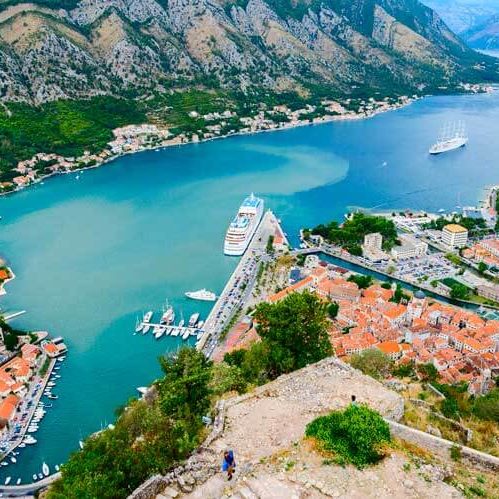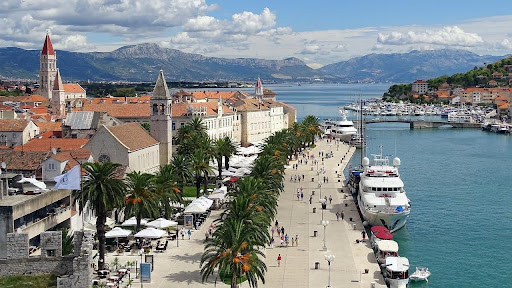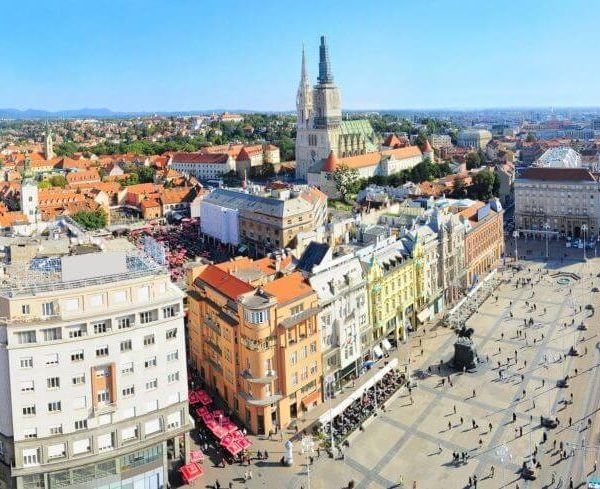Description
Best of Balkans
Hidden Treasures of Former Yugoslavia
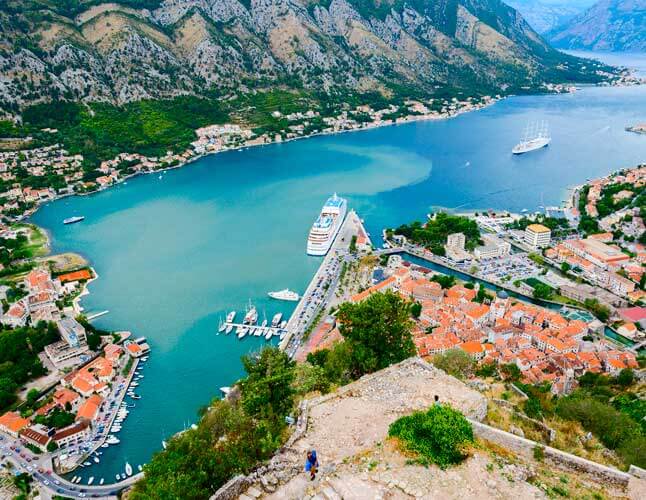
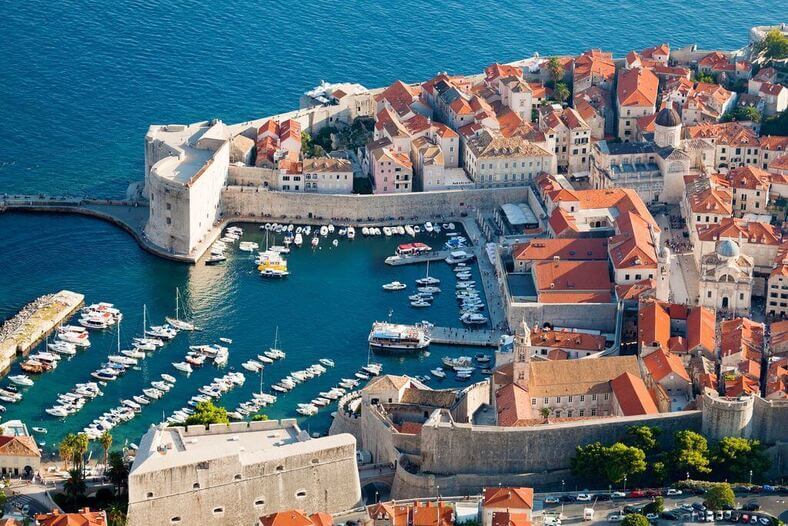
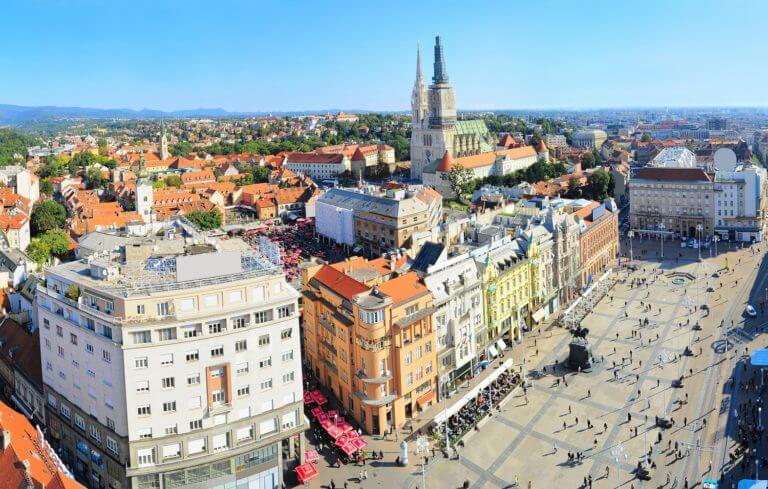
Our multi-day tour package Best of Balkans – Hidden Treasures of Former Yugoslavia includes visiting five countries and their greatest attractions: Slovenia, Croatia, Montenegro, Bosnia and Herzegovina, and Serbia. These countries used to form part of Yugoslavia, a country which existed as a kingdom between 1918 and 1941 and as a socialist country between 1943 and 1991. Yugoslavia was an amazing mix of people, languages, religions, cultures, history and geography. In 1991 it split into new countries and we invite you to explore them with us! Although the Balkan Peninsula is not as famous as other European regions, you will be surprised to learn it is home to some of the most naturally mesmerizing cities and landmarks on Earth.
Highlights: Zagreb, Plitvice Lakes, Split, Dubrovnik, Lovćen National Park, Kotor, Mostar, Sarajevo, Višegrad, Kamengrad, Belgrade, Novi Sad, Ljubljana, Postojna Cave, Predjama Castle, Lake Bled
Send us your request:
- Duration: 12 nights / 13 days
- Tour package includes:
- Pick-up at Zagreb Airport,
- Drop-off at Jože Pučnik Airport Ljubljana,
- All transportation per program,
- Sightseeing per program,
- Entrance fees to: Postojna Cave, Predjama Castle, Plitvice Lakes National Park, Dubrovnik City Walls, Lovćen National Park, underground tunnel “tunel spasa”,
- Private vehicle with driver,
- English-speaking guide,
- 12 breakfasts,
- 12 overnight stays on twin/double sharing basis in 3* or 4* hotels: 1 night in Zagreb, 2 nights in Split, 2 nights in Dubrovnik, 1 night in Kotor or near, 2 nights in Sarajevo, 2 nights in Belgrade, 2 nights in Ljubljana,
- All applicable tolls, fees and taxes.
TOUR DETAILS
Day 1: Arrival, Zagreb
Our agent will welcome you at Zagreb Airport and take you to your hotel for check-in (after 14:00). You will have time for unpacking and lunch, which will be followed by a light walk downtown with a panoramic city tour. We will see Donji grad, Kaptol with the Zagreb Cathedral, the largest church in Croatia, Gornji Grad, Bloody Bridge, Stone Gate and St. Mark’s Square. Overnight stay in Zagreb.

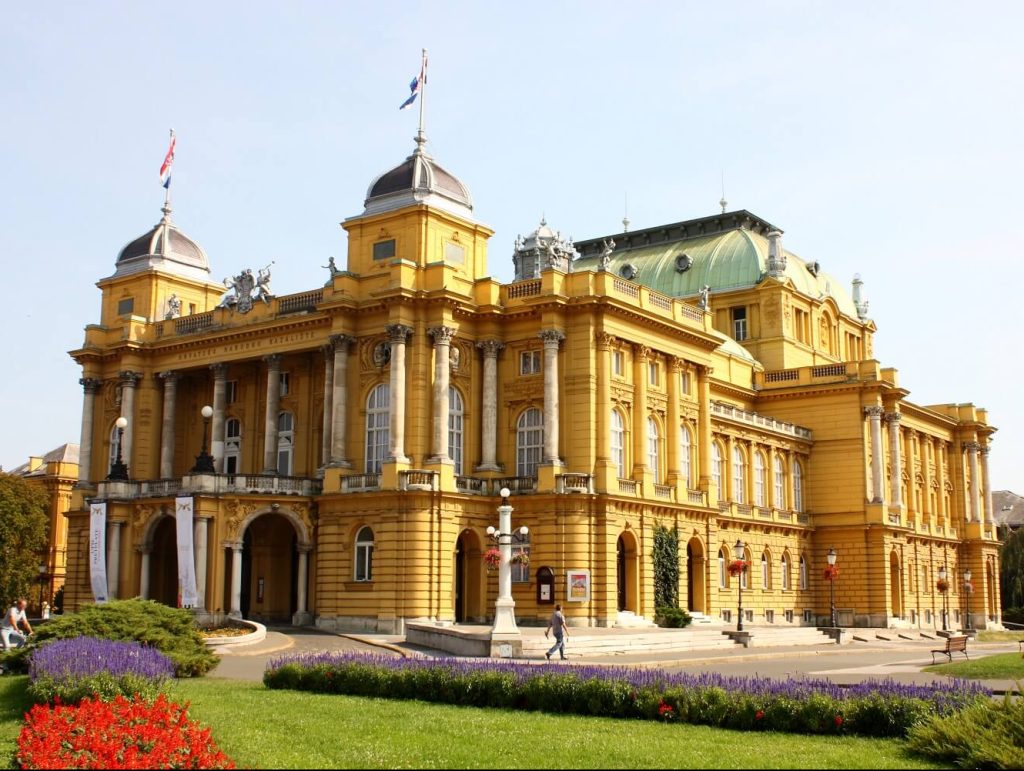
Day 2: Plitvice Lakes
After breakfast, the road will lead us through the town of Karlovac, which is named after its founder, the Austrian archduke Charles II Habsburg. We will continue along the valley of the Korana River to Slunj and towards the Plitvice Lakes National Park. This natural beauty presents sixteen lakes in beautiful blue-green pastel colours, which reflect the surrounding forests. The water in the waterfalls flows from lake to lake, creating a unique landscape. Plitvice Lakes National Park is listed as one of the natural heritage sites on the UNESCO World Heritage List. Our journey will continue towards the Adriatic Sea and along its shores to Croatia’s second largest city, Split. Overnight stay in Split.


Day 3: Split
After breakfast, we can visit the Klis Fortress, where the Game of Thrones was filmed (optional). We will descend to the ancient amphitheatre ruins in Solin, followed by a sightseeing tour of Split and visiting Diocletian’s Palace, which is on the UNESCO World Heritage List. At the beginning of the 3rd century, it was built by the Roman emperor Diocletian, born in the town of Solin near Split. A walk around the 1700-year-old palace is actually a walk through the heart of today’s Split. On the central square called the Peristil, we are actually standing on the original cobbled almost two thousand years old Roman street. We will also see the Temple of Jupiter, Cathedral of Split, St. Domnius Liberty Square or Prokurative and much more. In the afternoon, you will have some free time to explore the city by yourself. Overnight stay in Split.
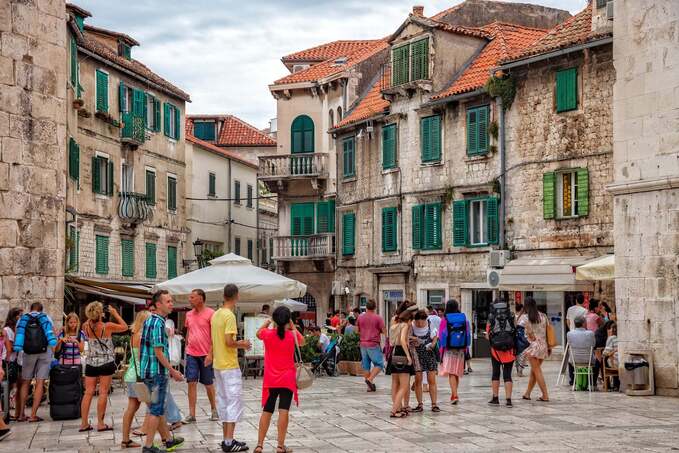
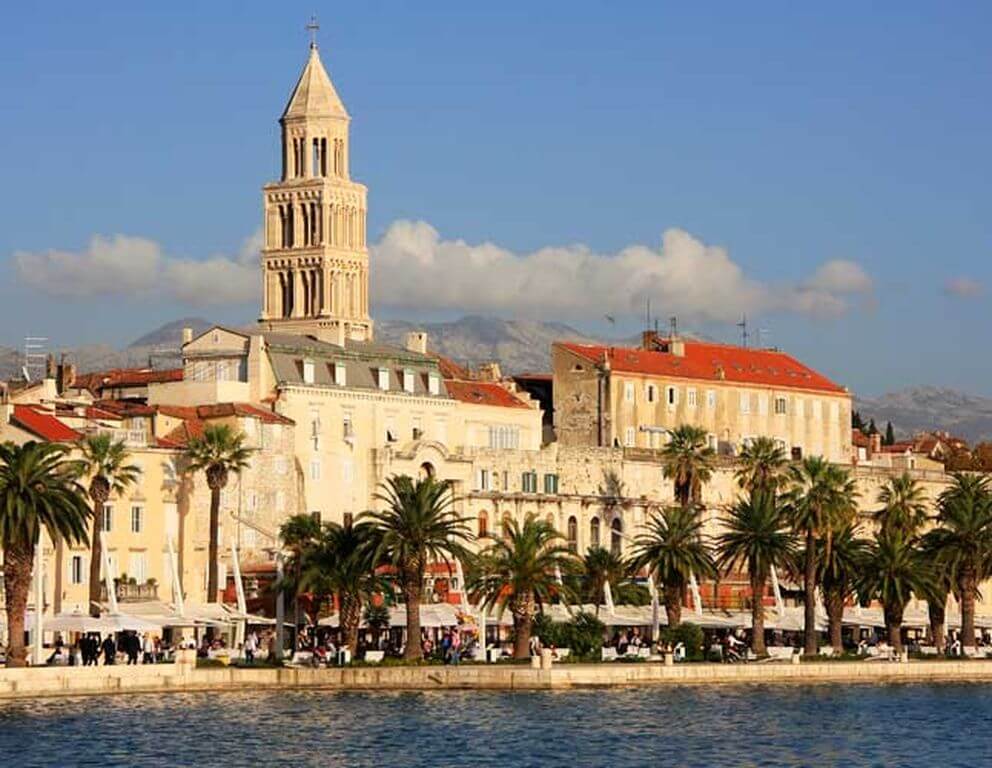
Day 4: Dubrovnik
In the morning, we will head towards the coastal town of Neum, where we will pass the Republic of Bosnia and Herzegovina for 5 km, and then return to Croatia. We will continue on the scenic coastal road along the Pelješac peninsula and pass through the Elaphite Islands to Dubrovnik. We will arrive in the afternoon and explore the city, which is the pearl of southern Dalmatia, an old town listed on the UNESCO World Heritage List. We will experience the charm of the remaining buildings from the time of the old Dubrovnik Republic, enjoy the view of the Renaissance architecture with some traces of Gothic, see the Franciscan monastery with one of the oldest pharmacies in Europe, the central street Stradun, the Sponza Palace and the church of St. Blasius, a majestic cathedral. Overnight stay in Dubrovnik.
*Optional: ascending to the Fort Imperial (cable car), which offers the most stunning view of Dubrovnik and its surroundings.

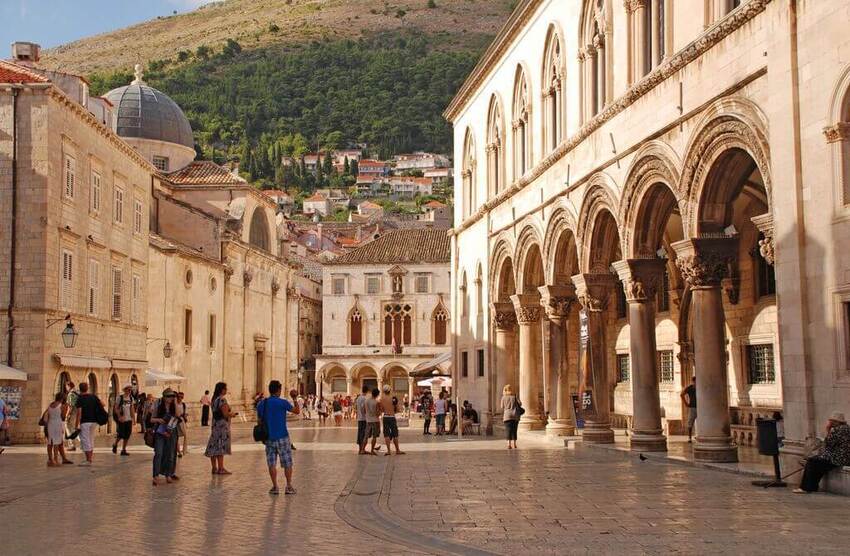
Day 5: Dubrovnik
Day at leisure in Dubrovnik. You can get to know the town even better by discovering it on your own or relax by the scenic pebbly beach. Overnight stay in Dubrovnik.
Day 6: Montenegro
Our journey will continue to Montenegro through Herceg-Novi, at the bay of Boka Kotorska to Lovćen National Park (Mausoleum of P. Petrović Njegoš, the founder of Montenegro country) and Cetinje (the historical capital of Montenegro). An old panoramic road offers multiple photo stops with amazing views and attractions. There are 461 steps leading to the top of the Mausoleum, which will, in turn, reward you with a striking panorama of Montenegro, stretching across about 60 % of the country’s territory. After the visit, we will continue driving along the coastline to Kotor, feasting our eyes on the marvellous landscape passing by. The Bay of Kotor is also known as “the most southern fjord in Europe”. After quite a fair share of driving planned for this day, we will check-in to our hotel and rest. Overnight stay near Kotor.

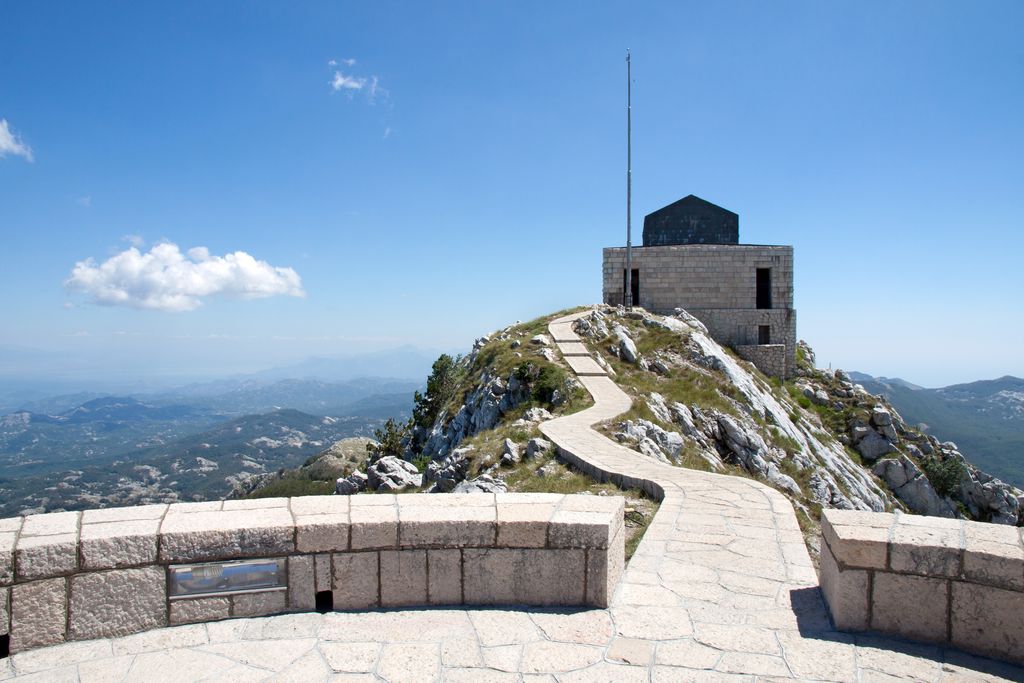
Day 7: Kotor, Mostar
In the morning, we will stroll around the medieval fortified town of Kotor and visit the old city centre. The small town boasts 18 churches, a basilica and 2 monasteries. The Venetian influence left its own distinctive mark on the architecture of the old town, which is under the protection of UNESCO. Afterwards, our journey will lead us to Bosnia and Herzegovina, through Trebinje to Mostar (short city tour) and all the way to Sarajevo. Overnight stay in Sarajevo.
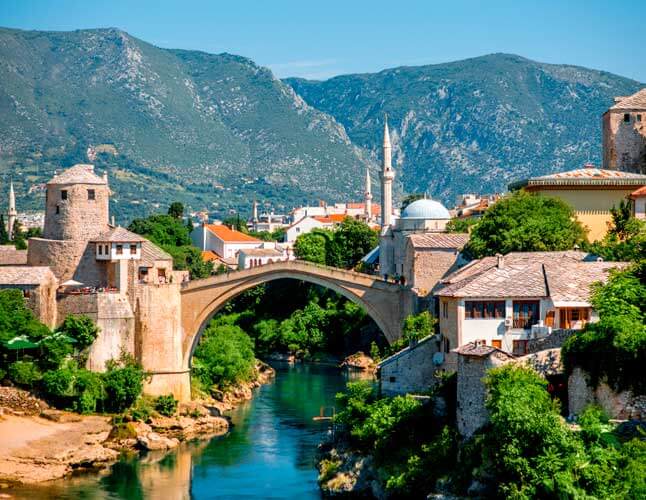
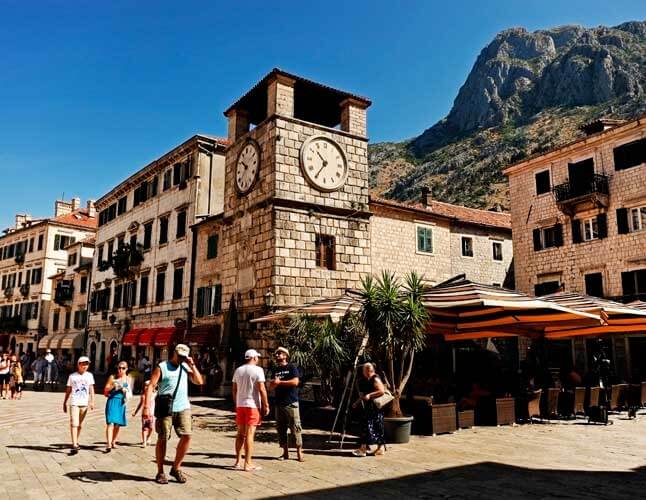
Day 8: Sarajevo
We will visit the heart of the old Sarajevo, see sites such as Baščaršija, Viječnica, the most representative building from the Austro-Hungarian era, Gazi Husrev-beg Mosque, Old Orthodox Church and the Catholic Cathedral. We will also visit the bridge of Gavrilo Princip, where Princip assassinated Archduke Franz Ferdinand, which triggered the start of the World War I in 1914. In the afternoon, we will visit the underground tunnel under the airport (“tunel spasa”), which was the only way out of besieged Sarajevo during the war in 1991. We will visit the source of the Bosna River, the so-called “vrelo Bosne.” After we return to the city, we will take an elevator and ascend the tallest skyscraper in the Balkans, Avaz, which is 142 m high. Overnight stay in Sarajevo.
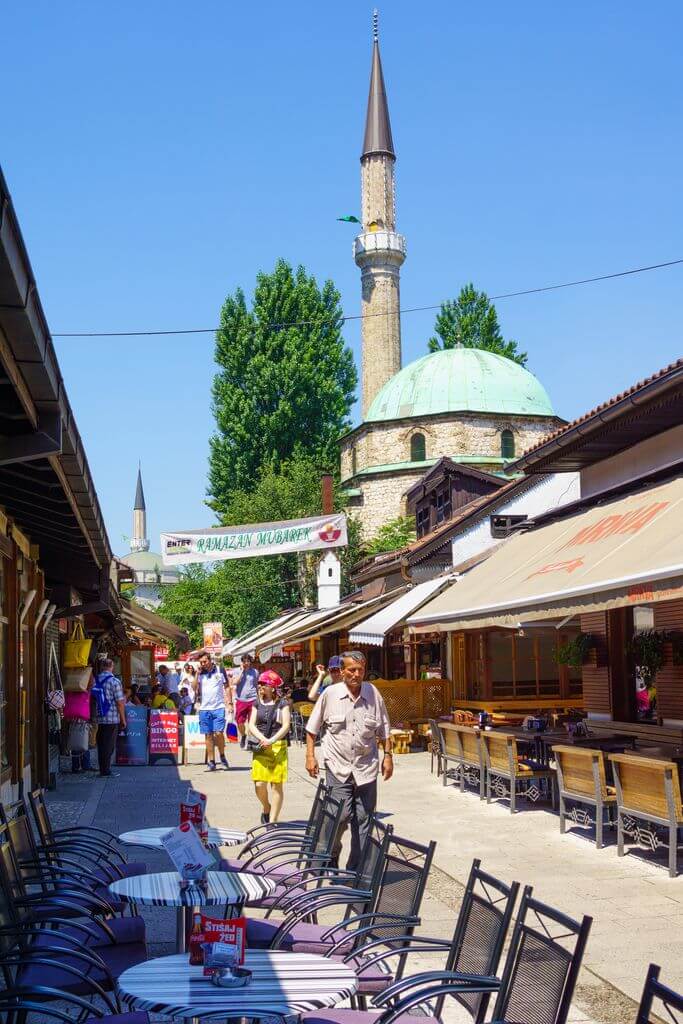

Day 9: Višegrad, Kamengrad
After breakfast, our journey will lead us to Serbia, with a stopover in Višegrad. We will see a more than 500-years-old Turkish stone bridge, which was described by the Yugoslav Nobel Prize winner Ivo Andrić in his novel “Most na Drini”. We will visit Kamengrad, which is based on the ideas of the film director Emir Kusturica. Once in Serbia, we can visit Drvengrad just across the border, another city that was constructed following the idea of Kusturica. The path through Serbia will lead us through Bajina Bašta and Valjevo all the way to Belgrade, where we will arrive in the evening hours. Overnight stay in Belgrade.
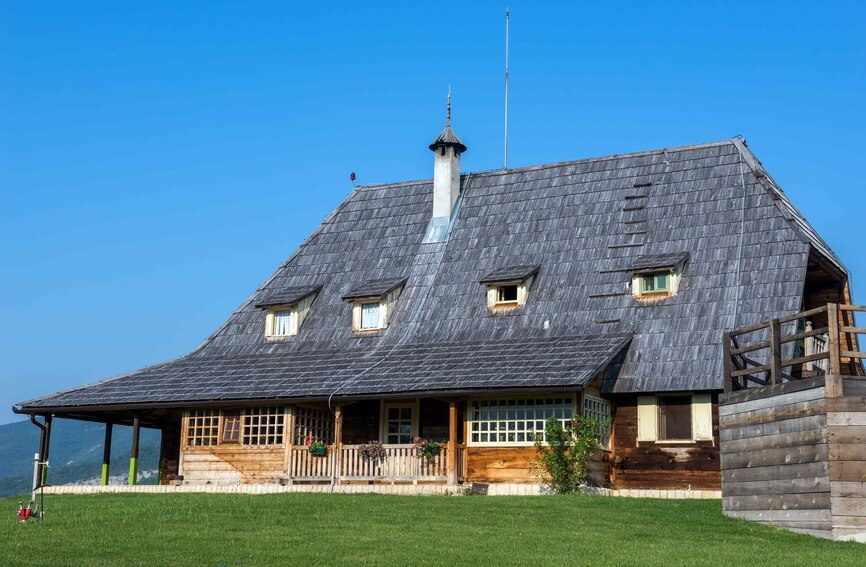

Day 10: Belgrade
After breakfast, we will go on a sightseeing tour Belgrade, a former capital of Yugoslavia and today’s capital city of the Republic of Serbia. From the Kalemegdan Fortress in Belgrade, we will have a wonderful view of the confluence of the rivers Danube and Sava. We will also visit the Sahat Tower and walk along the Knez Mihajlo Street. We will visit the former Federal Assembly of the former Yugoslavia and visit the mausoleum of Josip Broz Tito and his wife Jovanka Broz, called “Kuća cviječa.” The next stop is Church of Saint Sava, the biggest Orthodox church in the Balkans. Dinner is recommended in the bohemian quarter Skadarlija accompanied by “starogradska” music. Overnight stay in Belgrade.
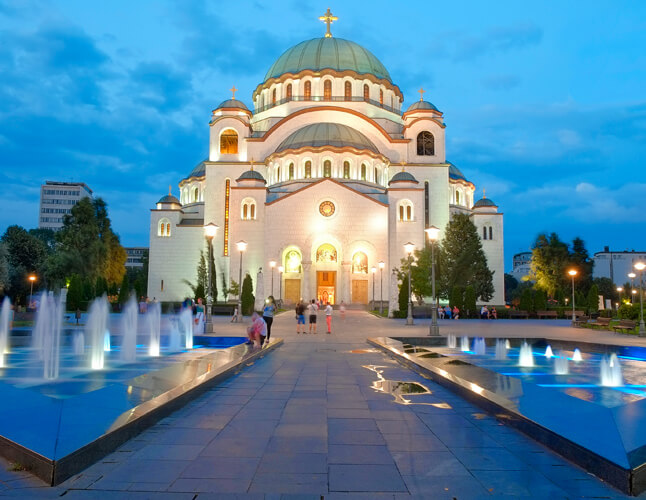
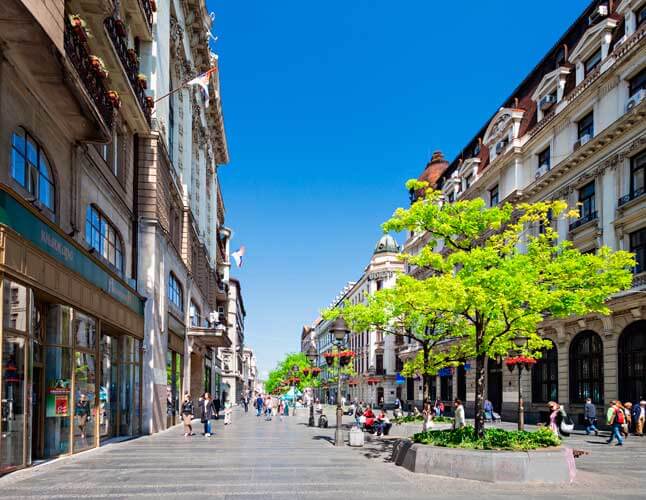
Day 11: Novi Sad, Ljubljana
After breakfast, our journey will lead us from Belgrade to Novi Sad. We will go on a panoramic city tour to discover numerous historical and cultural monuments, found on the streets and squares of the old city centre. We will see famous sites such as the Liberty Square, Town Hall, Svetozar Miletić Monument, “Name of Mary” Church, Theatre Square with the Serbian National Theatre, 18th-century Uspen Church and much more. Above the town, the prominent Petrovaradin Fortress rises, which was built by the Austrians at the end of the 17th century to defend themselves from the Turks. The journey will lead us through Croatia to Ljubljana, proclaimed by the European institutions the »European Green Capital 2016«. Our tour guide will take you for an evening panoramic city tour to show you its main attractions, from Prešeren Square and Tromostovje (Triple Bridge) to Town Square with its baroque fountain and Town Hall. Overnight stay in Ljubljana.
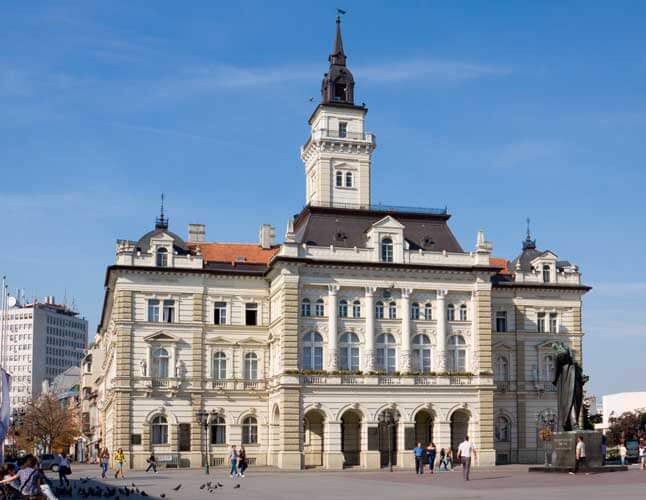
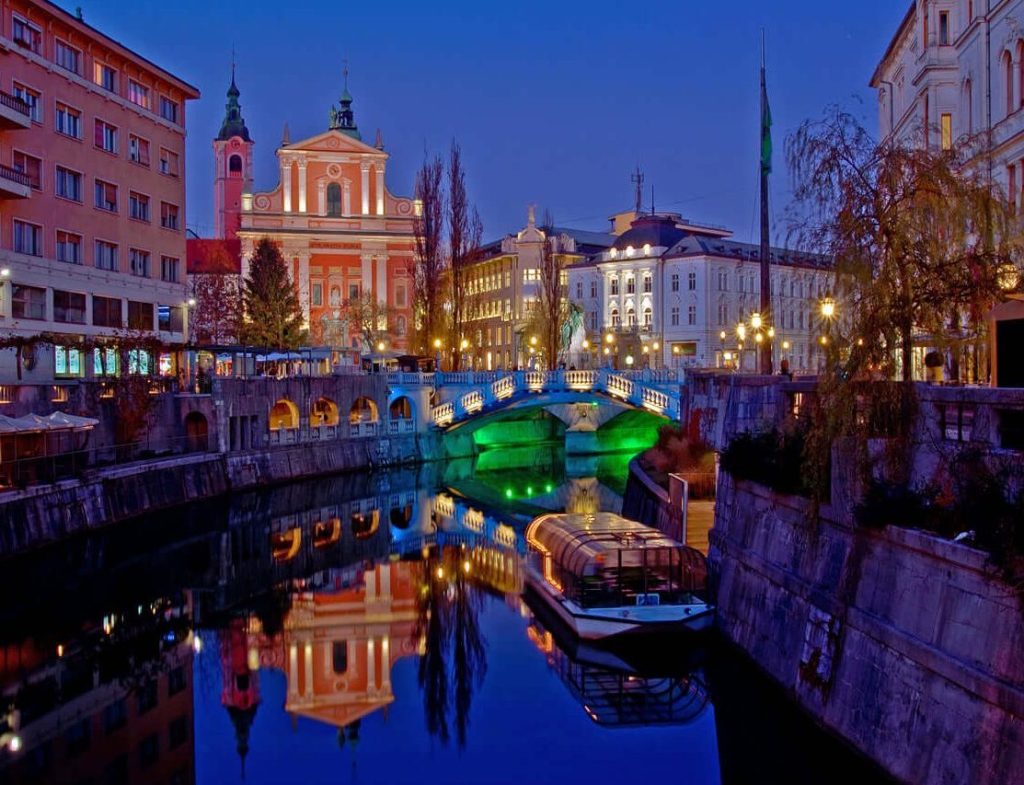
Day 12: Postojna Cave, Predjama Castle, Lake Bled
After breakfast, we will visit the Postojna Cave, one of the largest Karst landmarks in the world. An electric train will take us through the tunnels of the cave, which is with its 20 km long cave system the most impressive and the most visited cave in Europe. We will be able to spot human fish, the most famous cave animals in the world that used to be believed to be dragon offspring. We will continue with a tour of the mighty Predjama Castle from the 12th century, mounted on a 123 m high cliff above the Lokva River. There are many mysterious tales and legends about the castle and its knights. The most famous of them all is the story of Knight Erazem of Predjama, who rebelled in the 15th century against the emperor and became the first Slovenian Robin Hood. Today’s castle is from the Renaissance period and incorporates a museum.
In the afternoon, we will drive to another part of Slovenia – Gorenjska (Upper Carniola) Region – to the most renowned tourist place in Slovenia, Lake Bled. As Bled is a place for relaxation and enjoyment, you will hear all the relevant stories, facts and directions/tips on the way and learn more about Bled upon arriving there. You can decide how you want to spend the next few hours at leisure at the resort by yourself and choose from the possibilities you will learn about. Our guide can take you on a tour of the majestic Bled Castle (optional), which is located on a steep 139 m high cliff overlooking the lake and offers a heavenly view of Lake Bled, as well as the surrounding alpine mountaintops and valleys. Bled Castle, first mentioned in 1011, is one of the oldest Slovenian castles. You can admire the old wooden Gutenberg printing press and the castle’s smithy, while Bled Castle is also famous for being one of the most beautiful wedding venues in Europe. Alternatively, you can take a pleasant walk around the lake or join a “pletna” boat ride to the island in the middle of the lake, which is named after the town of Bled and is, in fact, the only island in Slovenia. You can take a look at an impressive medieval church and its “wishing bell”. After that experience, you can take some time to treat yourself to a good cup of coffee, enjoying the beautiful view of the lake at the foot of Pokljuka and tasting the traditional local dessert “kremšnita” (cream cake), which has been made in Bled for over 60 years. Another possibility is visiting the magnificent Vintgar Gorge nearby (typically open between April and November). Return to Ljubljana in the evening, overnight stay in Ljubljana.
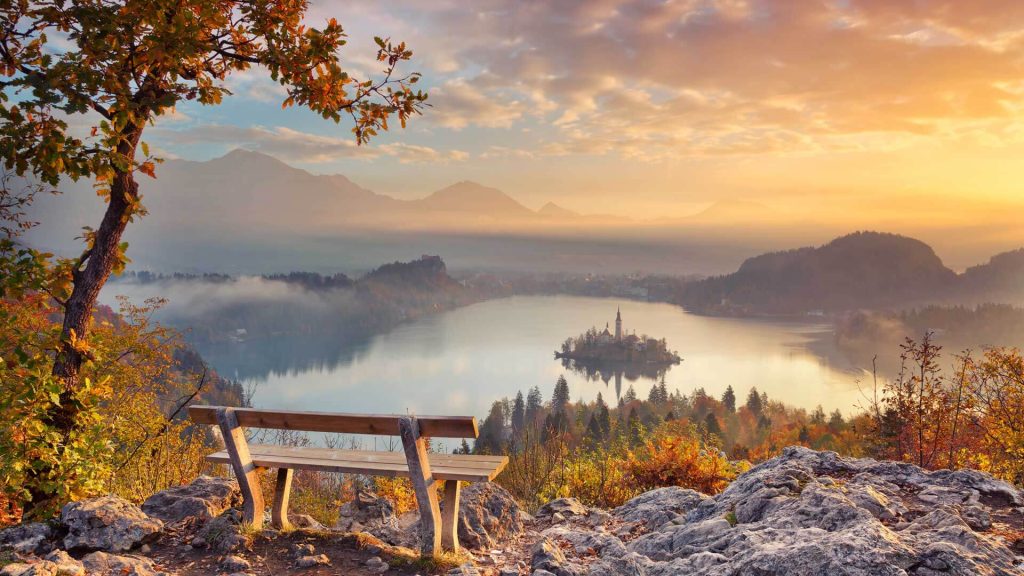
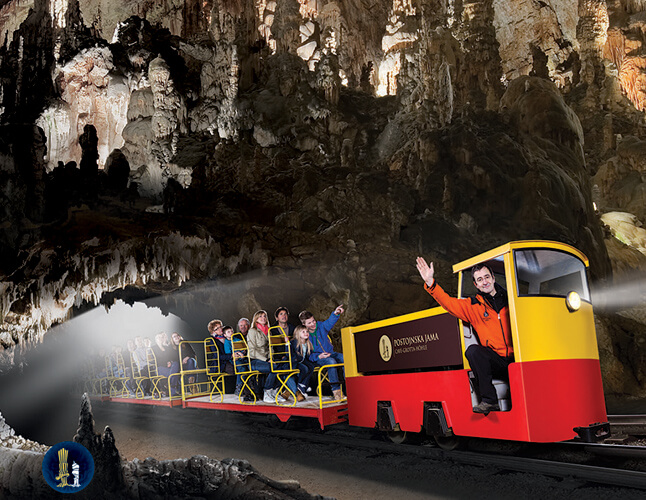
Day 13: Departure
Check-out, transfer to Ljubljana Airport or Zagreb Airport (optional).
*Optional: You can prolong your vacation by staying in Ljubljana one more day. We recommend taking a day trip to the Adriatic coast and discovering the charming towns of Trieste (Italy), Piran and Portorož (Slovenia).
PLEASE NOTE:
In the case of unexpected events (traffic conditions, weather conditions or other inconveniences that we cannot influence), we can change the order of trips and sometimes the contents to make the tour as logistically convenient as possible.
What to see in Zagreb
Must-see attractions in Zagreb are Donji grad, Kaptol with the Zagreb Cathedral (the largest church in Croatia), Gornji Grad, Bloody Bridge, Stone Gate and St. Mark’s Square. As Croatia’s capital city, Zagreb has a lively urban, cultural and art scene full of lovely cafés, events, gallery and other exhibitions.
What to see in/near Split
Split’s main attractions are the famous Diocletian’s Palace (UNESCO World Heritage Site since 1979 and one of the best preserved monuments of the Roman building heritage in the world), Temple of Jupiter, Cathedral of Split, Klis Fortress, Galerija Meštrović, St. Domnius Liberty Square or “Prokurative”, Fruit’s Square and the central square “Peristil”.
What to see in/near Dubrovnik
Dubrovnik is an old town listed on the UNESCO World Heritage List with remaining buildings from the time of the old Dubrovnik Republic and Renaissance architecture with traces of Gothic. A must-see are the Franciscan monastery with one of the oldest pharmacies in Europe, the central street Stradun, Sponza Palace, Church of St. Blasius, Lovrijenac Fort and the famous Walls of Dubrovnik.
What to see in Montenegro
Absolute must-see in Montenegro are Lovćen National Park with Njegoš Mausoleum, the Bay of Kotor a.k.a. “the most southern fjord in Europe” and Kotor Old City, Cetinje, the ultimate party stop Budva, Ostrog Monastery, Sveti Stefan, Skadar Lake, and most importantly: long, pristine, divine beaches!
What to see in Sarajevo
Sarajevo’s most popular sites are Baščaršija, Gazi Husrev-beg Mosque, Old Orthodox Church and the Catholic Cathedral, Sarajevo City Hall, the bridge of Gavrilo Princip, underground tunnel “tunel spasa”, the source of the Bosna River “Vrelo Bosne and the tallest skyscraper in the Balkans, Avaz Twist Tower.
What to see in Belgrade
When in Belgrade, you can walk along Knez Mihajlo Street, see the Sahat Tower, the Church of Saint Sava, the former Federal Assembly of the former Yugoslavia and the Marshal Tito’s Mausoleum “Kuća cviječa”, while Kalemegdan Citadel (Fortress) offers a wonderful view of the confluence of the rivers Danube and Sava.
What to see in Slovenia
With its breathtaking landscapes, green forests, emerald rivers, deep blue Alpine lakes, exciting mountain tops, scenic historical towns and castles, Slovenia is like a real size postcard! It also boasts three UNESCO World Heritage sites: Škocjan Caves, Idrija and the Ljubljana Marshes, where great mysteries unravel.
What to do in Zagreb
For the best cultural experience of Zagreb, you must visit its colourful markets, starting with “Britanski trg” (British Square), the oldest open-air market only 10 min walking distance from the main square. If you wish to escape from the city rush, you can stroll through the Maksimir Park, visit the Botanical Gardens or take a trip to Plitvice Lakes National Park.
What to do in/near Split
Split is a 17-centuries-old Croatian town of great history and cultural heritage that you can discover on a sightseeing city tour. You can visit Trogir, a small island near Split (UNESCO World Heritage Site), nearby wineries and vineyards, forests, jogging trails, recreational terrains and beaches with extraordinarily clean sea.
What to do in/near Dubrovnik
When in Dubrovnik, there are numerous attractions you can discover. If you are interested in historical heritage, you can visit the Museum of Croatian War of Independence or Gornji Ugao Tower. For nature lovers and leisure tourists, you can take a trip to the Island of Lokrum or Korčula Island, Mount Srd or relax on the Sveti Jakov Beach.
What to do in Montenegro
Climbing 461 steps to the top of Njegoš Mausoleum will reward you with a striking panorama stretching across about 60 % of the country’s territory. Aside from impressive natural beauty, Montenegro also offers splendid activities, such as Tara River rafting for adventurers, hiking in Durmitor National Park, skiing in ski resorts, canyoning, boat tours and more.
What to do in Sarajevo
Strolling around Old Town, you can discover cute souvenir and coppersmith’s shops (if there is one thing you can buy, let it be copper dzezva!) and get the chance to taste the national brandy “rakija” and dish “ćevapi”. For a historical reminder, visit the stone plaque marking the spot where Archduke Franz Ferdinand was assassinated in 1914, which triggered the World War I.
What to do in Belgrade
To learn about the captivating history of Yugoslavia, visiting the Museum of Yugoslavia is a must. On a more contemporary note, you can visit the Museum of Contemporary Art, check out Escape Rooms, chill by the lake beach Ada Ciganlija, or have dinner in the bohemian quarter Skadarlija accompanied by the traditional “starogradska” music.
What to do in Slovenia
Take time to enjoy a city tour of Ljubljana, discover Slovenia’s natural treasures, listen to our tour guide’s interesting stories about Slovenia’s historical and cultural heritage, taste the local cuisine and exquisite wine, relax or try some exciting activities, such as rafting, kayaking, hiking, biking and SUP-ing.
